Kubo and the Two Strings
is the first animated film to be nominated for Best Visual Effects since
The Nightmare Before Christmas back in 1993. However, Steve
Emerson and his team at LAIKA never believed in taking the easy way out.
Emerson actually started his career in
live action films, rising to a level in Hollywood where he worked on
The Matrix series and Transformers. He was rising in the
ranks, but no longer comfortable with life in Los Angeles. It probably
should have been career suicide when he left LA for the Pacific
northwest, however he got lucky that a new production company opened in
his new home of Portland, Oregon.
LAIKA was the name of the studio,
created by Travis Knight to be one of the final homes of stop-action
animation in a CGI world. Emerson signed up with LAIKA on the ground
floor. He’s now been with the company for almost a decade, contributing
to all four of the popular films that have been released by the company;
Coraline, ParaNorman, The Boxtrolls and now
Kubo.
Now, living in Portland, Emerson has
become an Oscar Nominee. Kubo and the Two Strings, a tribute to
magic, family and bravery in old Japan, has ended up getting two Oscar
noms, for Best Animated Film as well as Best Achievement in Visual
Effects. A couple of weeks before the Oscars, Emerson chatted about his
career, his films, and his nomination.
What was it like to find out you were
nominated for an Oscar? What are your plans for Oscar night? Do you
have a speech in mind if you should win?
Oh, wow. First off, I do not have a
speech. It’s been so busy the past couple of weeks. It’s been so
exciting. I haven’t honestly even had a few moments to start thinking
about that. The moment where I found out, it was like 5:00 in the
morning. I had gotten up. I was watching the streaming with my wife
and my son. We’re sitting on the couch, drinking coffee. We found out
that the nomination happened. It’s been a long process. These films,
they take a long time to make. There is an incredible amount of
dedication on the part of all the artists involved. You put years and
years of your life into these things. This is our fourth film. I would
just say that I’m intensely connected to all of these films and to the
vision that Travis Knight has for the studio. So, at that moment, when
we found out that we were being recognized, it just all hit me at once.
I broke down a little bit. I started to cry. And unbeknownst to me, my
wife took a picture of me crying and immediately posted it on Facebook.
(laughs)
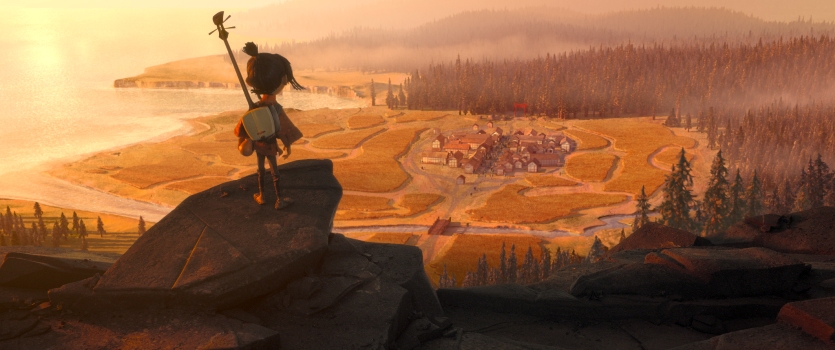 Is nothing sacred?
Is nothing sacred?
But the other thing I would say is that,
in terms of the nomination, it’s important to realize that we are a
small, independent, stop-motion studio that is up in the Pacific
northwest, working out of a warehouse. We have a visual effects team
that is probably about the size of the lighting team on the majority of
these other films. To be given this level of recognition alongside such
incredibly talented filmmakers, it’s just truly overwhelming. Doctor
Strange blew my mind. Deep Water Horizon – in terms of the
visual effects work – was one of my favorite films this year. John
Knoll (Rogue One: A Star Wars Story), Rob Legato (The Jungle
Book), they are visual effects supervisors that I intensely admire
their work. To be able to be recognized alongside these other projects,
honestly it feels like I cut an album playing a bassoon in my basement,
and now I’m up for a Grammy with Paul McCartney and Bob Dylan. It’s
incredible. It’s really incredible.
What got you interested in stop-motion
animation? You had worked mostly in live-action before joining LAIKA.
Why the change?
For me, what happened was, I had spent a
long time working in live-action visual effects down in Los Angeles. My
family and I, we were looking for a change. We decided that we were
going to relocate from Los Angeles to Portland, Oregon. We were just
going to make it work. What ended up happening was I spent the better
part of a year commuting between Portland and Los Angeles, picking up
jobs. It was not an ideal situation, because I had young children.
Then I happened to hear from a friend that there was this studio called
LAIKA that was working on a feature film called Coraline, and
that I should look into it. I was fortunate enough to go a “Look
at LAIKA” night. I went there that night and introduced myself to some
people. A lot of it was timing. They hired me within a couple of weeks
to come in and contribute to Coraline. Coming in the door I had
very, very little to no experience with stop-motion animation
production. But I did have a great deal of experience working on stereo
or 3D films and with live-action visual effects.
So how is it different?
What’s important to realize about the work
that we’re doing here at LAIKA – and I think this is something that not
a lot of people quite get – is that we very much are working in a
live-action visual effects environment. That is our workflow. When a
lot of people think about animation they think 2D cel drawings, they
think CG [computer generated]. Stop motion is all real world. We have
actors that we shoot on sets. We shoot them on green screens. The
difference is they happen to be very small actors that are brought to
life one frame at a time. We take those performances and we add
effects. Basically, it’s the same processes, a lot of the same
software, that you would use if you were making a Marvel movie. The
only difference on our side is that there is certainly a scale
difference. Beyond that, we never deal with realism.
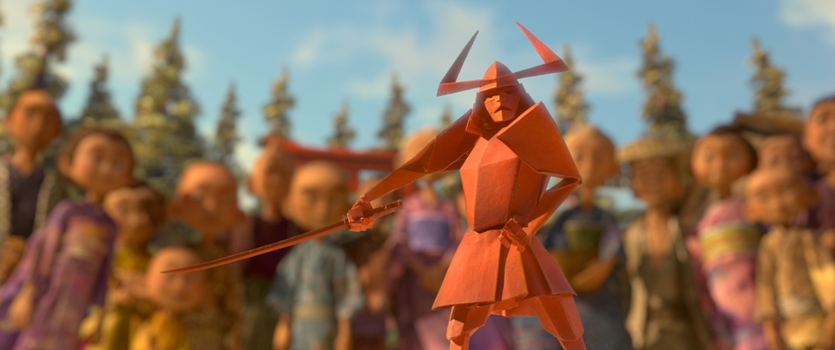 Can you give an example?
Can you give an example?
If you’re making a photoreal feature, a
superhero movie, and you need an ocean, you can go get yourself Houdini
[a computer special effects program] and start working with the ocean
tool kit. On our side, we need oceans that feel like they are
handcrafted, and hand animated, and are heavily, heavily designed. I
can’t just deliver a photoreal ocean. I need to deliver an ocean that
feels like it was made out of garbage bags, with whip-lock patterning
and hand animated by a hung-over animator that’s out on the stages here
in Portland, Oregon. (laughs) I can’t just give them fire, it
has to be fire that looks like it was possibly created by cheesecloth,
which is being reflected through shower glass and lit in a very specific
way, and has been heavily, heavily art directed. It is a process that
is extremely complex. It is entirely live action visual effects. I
will just say that I am fortunate that the majority of the artists that
work here in visual effects at LAIKA have been here since the
Coraline days. We’ve all learned together and grown together and
made mistakes together. We just know how to do it now. And we know how
to do it efficiently. It is completely because we have ten years in our
back pocket.
I have the book by Emily Haynes
[The Art of Kubo and the Two Strings].
The book said the giant dragon puppet skeleton had motion control
rigging and a control system using a bowling ball and sacks of sand.
Could you elaborate on that?
Sure. What happened with the giant
skeleton in Kubo and the Two Strings is as a studio we are
honoring the art of stop-motion animation. We are honoring special
effects artists like Ray Harryhausen (Jason and the Argonauts),
Willis O’Brien (King Kong), Jim Danforth (When Dinosaurs Ruled
the Earth); these incredible innovators of the past that truly laid
the foundation for the visual effects industry. Back before
computers started to come into the mix in the 90s, if you needed a
monster in your movie, you were either going to be building a puppet, or
you were going to be putting somebody in a suit. Computers did not come
into the mix. These guys, they were innovators.
How did you do it?
We had a giant skeleton that needed to
perform within this film. We looked at it. All the heads of
departments, we go through, we break down the script, we look at
storyboards. We talk about how we’re going to execute upon something.
There were a few ways that we could have gone. We could have built a
computer-generated skeleton. We could have built a much smaller scale
skeleton. Or, we could move forward and build the largest stop-motion
puppet that has ever performed in a feature film. Over the course of
those discussions, we started with wanting to try and build a
smaller-scale puppet. Very similar to what Ray Harryhausen used to do
in the old days. It was just something, maybe a foot and a half tall.
We would take that and use it to composite in post-production to
actually do the shots.
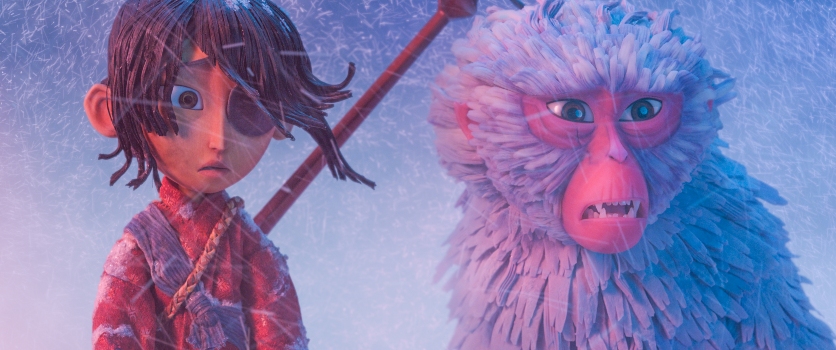 Why didn’t that work?
Why didn’t that work?
The problem with the smaller scale version
of that skeleton was that there was a great deal of interaction that
needed to happen with the other characters. Characters are being
grabbed by it. Characters are running across it. Characters are
leaping from the head to the arms. It’s not just a puppet, it’s also a
set. At that point, we said; all right, we’ll do a small-scale version,
and then we’re going to build large-scale pieces. We’ll build an arm.
We’ll build a head. We mapped out all the portions of that skeleton
that would be needed to be built large scale. It turned out it was like
75% of it, anyway.
May as well finish it...
(laughs)
So at that point, we just said; okay, we have an
opportunity here to do something that nobody has ever done before. We
learned a lot on The Boxtrolls. We had a large-scale puppet
called The Mecha Drill, which was about the size of a small child. We
learned a lot from that experience. The difference with this particular
puppet was that it needed to be 100 feet tall, if it were in the real
world, hanging out with you and I. That means if it’s in the puppet
world, we’re going to be looking at something that is going to be
roughly 16 feet tall. Which is massive. Much, much larger than
anything we’d ever done previously.
But you did it...
What I love about LAIKA... this is what I
love so much about this studio, we look at that and we said this is so
far beyond anything that we’ve ever done before. Let’s do it.
(laughs) So we dive in and we figure it out. In the end, we ended
up creating this massive puppet. It was 16 feet tall. It weighed over
400 pounds. It had a wingspan of over 20 feet. The animator was able
to get roughly about a second a week, in terms of animated performance,
out of it. He’s climbing all over it on scaffolding and ladders. It
was an incredible challenge. No reasonable film production would ever
have done it that way. The reason that we did it that way is because as
a studio, we honor the art of stop-motion animation, and the work of
artists before us, like Harryhausen, O’Brien, Jim Danforth. We choose
to do it the hard way in order to create distinctive visuals that,
honestly, nobody else would be crazy enough to do. (laughs)
That’s why I love it. That’s why I love being a part of this.
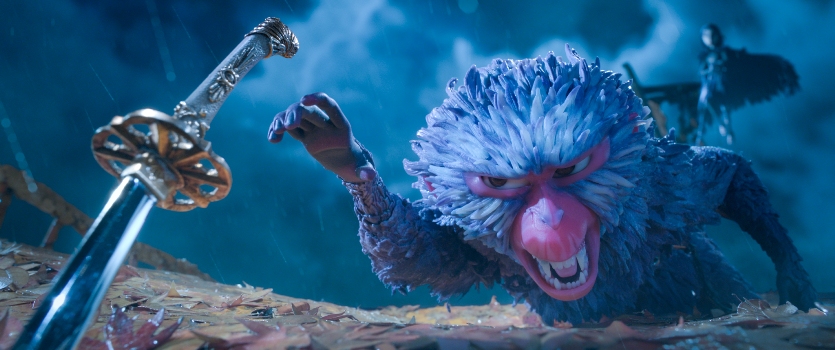 In a movie world where most of
the animation is done by computer, what is it visually about stop-motion
animation that you find refreshing and intriguing?
In a movie world where most of
the animation is done by computer, what is it visually about stop-motion
animation that you find refreshing and intriguing?
For me, in terms of what makes it
distinctive, or special, there is something about stop motion animation.
When I see performances being realized – inanimate objects being
brought to life through human hands in real world lighting – that take
me back to sitting criss-cross applesauce on my grandparents’ family
room floor. Watching on a tube television set Jason and the
Argonauts, or The Seventh Voyage of Sinbad. There was such a
magical component to it. It felt like they were bringing my toys to
life. We’ve all heard the term “movie magic” kicked around a lot.
Movie magic to me was going to a film, seeing a particular visual,
walking out afterwards, and talking with your friends, your family, and
trying to figure out how they did that. I think a lot of that has been
lost since a lot of the technology came into the fold. People, when
they see something that is particularly dynamic, they tend to dismiss it
to computers and technology.
Do you think that eventually there will be
a renaissance of traditional animation as a counter to CGI – a big
rebirth of things like stop-motion and ink & pen?
I hope so. I hope so... When I joined
LAIKA, roughly ten years ago now, that was the thing that I certainly
fell in love with. The idea that we were working to get a lot of this
in camera. We were looking for creative in-camera solutions to be able
to deliver these distinct visuals, unlike anything else that you’re
seeing in a lot of the entertainment industry at this point. It’s
certainly something that I have worked as a visual effects supervisor to
make sure that we’re hanging on to. We continue to honor that art. So,
what is it about stop motion that I think people see and they get a
different feeling from when they see those images? It’s hard to put
into words, but for me, it really is movie magic.
What was your inspiration to become a
designer in film? Who were your inspirations and mentors growing up?
When I graduated from film school in
college, I wasn’t necessarily looking to be a visual effects
supervisor. I wanted to be a filmmaker. I wanted to be a storyteller.
This was 1992. It was at that point where computers were just starting
to mesh with filmmaking and art. I came into the industry at a point
where I started in post-production. In all honesty, I started in
post-production because I was feeling like I was going to try to make
some independent films. If I was going to make independent films, I
wanted to be working at a post-production house, because I was going to
be able to save a lot of money, because I would have a lot of friends
that could help me out. Then what happened was digital technology
started coming into the mix, and I was a person that always loved
computers. I had always loved film. I had always had an affinity for
art. There was suddenly this opportunity to pursue a career out of a
fusion of those three things.
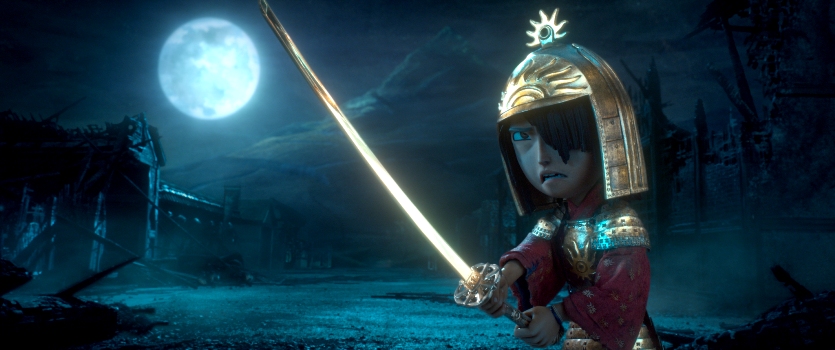 A perfect mix...
A perfect mix...
So, I pursued that as steadfastly as I
possibly could. I put myself through some [courses] on technical
training skill. I introduced myself and worked with people that were
doing the type of work that I was driven to eventually be able to do.
Then it just takes a lot of time until you actually get those
opportunities. When they come, you seize them and you leverage the work
that you’ve done, or the studying that you’ve done, in order to be able
to capitalize on those opportunities. So for me it was mostly about a
love of computers, a love of film. It was about a love of art. It was
about opportunity. Filmmakers, visuals; it sounds cliché at this point,
but really I was an eight-year-old kid in an R2-D2 t-shirt when I went
to see Star Wars for the first time. I surrounded myself
with that universe for the better part of 10-12 years. I went to see
ET when I was... I think I was probably a pre-teen at that point. I
remember just being inspired and moved. I remember crying in the
theater. (laughs) So, if I had to say the people that have
inspired me in the past, certainly it’s been the Star Wars
universe. It’s been Steven Spielberg and the work that he did with
ET. He created empathy with a puppet. That’s certainly what we’re
trying to do here at LAIKA. Beyond that, it’s an affinity for
filmmaking, technology and art.
What do you see as your role in the
cultural landscape?
Kubo & the Two Strings,
as much as it is an homage to Japanese culture, to
artists like Kiyoshi Saito it is also very much a tribute to the special
effects artists that [were] just mentioned. Harryhausen. O’Brien. Jim
Danforth. The innovators that came before us that laid the foundation
for this industry. What my impact might eventually be is that I will
continue to work to honor the techniques that of people before us. I
think stop-motion animation is very much an art. It is something that
deserves to be honored and innovated upon and not forgotten for the sake
of technology. Or because there is a different way, not necessarily an
easier way, but a different way to tell stories. Whether or not LAIKA
is ultimately the studio that creates a new level of interest in that
medium, whether there is eventually something of a renaissance of that
medium, I have no idea. But what I can say is that I love stop motion
animation. I am committed to honoring the art of stop-motion
animation. I believe in what Travis Knight is doing up here in
Portland, Oregon. We are going to work to tell the best possible
stories that we can using this time-honored technique. And then we’re
going to go from there.
In the press notes, Travis said “We are
heirs of a great tradition of storytelling.” How do the visual effects
people at LAIKA coordinate with the story-telling people? How involved
are you with things like scripting and storyboarding decisions?
Scripting and storyboarding; not very
involved at all. Once there is a script, I will step in and start to do
a break down. Just words on a page in terms of what I suspect the work
is going to be. Just start a dialogue with the producers. How many
shots we’re looking at. The types of artists that we’re going to need
in order to realize a particular script. But the work really starts
once there are storyboards and animatics, which are animated
storyboards. At that point, all of the heads of department here at
LAIKA, we sit down in a room, we look at the animatics, and we talk
about how we’re going to create each and every visual for a film. When
we do that, the rule is we always start in camera. We want to get as
much through a physical camera lens – using real world elements, and
hand-animated puppets – as we possibly can. Then, for whatever reason,
be it a resource issue, a technical issue, if there is a need for visual
effects to come into the mix, to extend environments, add background
characters, create water, fire, things that are extremely difficult to
get in camera, then that conversation opens up.
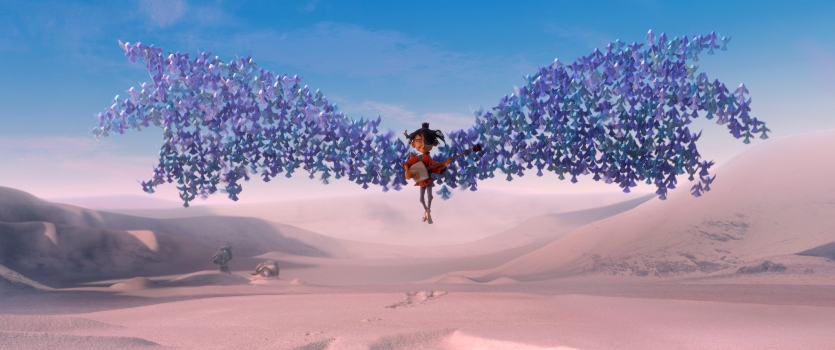 And then you come in more actively?
And then you come in more actively?
Then we start talking about: Okay, what is
it that we can do digitally to enable these directors to tell the
stories that they want to tell? How are we going to go about that in a
way that is responsible and ultimately honors stop-motion animation? If
it’s going to ultimately end up being digital, basically the rule is
we’re building it first. The animators, they can create a water
system. They can show us what a body of water would look like if it
were in a stormy environment. They can give that to us. We can rebuild
that physical version. We can create something that then can be
propagated across 25-30 shots much more efficiently. That enables us to
ultimately... what we’re doing here, we want to realize the full
potential of stop-motion animation. That stuff is really hard to do.
It’s hard to do because everything needs to be built. Because
everything needs to be hand animated, oftentimes storytellers are asked
to make concessions. That’s why, in a lot of classic stop-motion films,
you don’t see a lot of characters. You don’t see a lot of
environments. And you certainly don’t see a lot of big time Hollywood
effects.
How do you do things differently?
We want to be able to let storytellers
tell whatever story they want to tell without concessions. We’re going
to do that using technology in a way that is respectful to the art of
stop-motion animation. We get as much in camera as we possibly can.
Then if it turns out that we need to bring digital into the mix, we make
sure that whatever those elements are that are going to be manufactured
on a computer, they are all grounded in real world materials and testing
that we can gauge our efforts against, side by side.
The paper animation you did in
Kubo & the Two Strings
was incredible. How was that done?
All the paper animation in Kubo was
done primarily in camera. There were a few instances where we came in
and we added some digital components. Off the top of my head, some of
the origami birds, the big flocks of birds, we ended up doing some
digital work with those. But primarily the majority of the origami work
was done in camera, hand animated by stop-motion animators. I know it
was an extremely difficult exercise for the animators, and the art
department, in able to create all those effects. If you think about the
way that we do stop-motion animation, you’re talking about animators on
set, with big greasy fingers, animating three seconds of animation per
week. Five if we’re really lucky. On top of that, you’ve got the
moving pieces of paper around. So, the paper itself would start to
break down.
How did you get around that problem?
They did a great deal of testing with a
lot of different types of materials in order to figure out what might
work for all the origami animation. In the end, they ended up using
something that’s called tyvek, which apparently is a denser, more rigid
type of paper. It’s similar to something that you would get in a FedEx
envelope. At the same time, it was durable. It looked and performed
like paper. It would hold up over the course of days, weeks, or months,
when the stop-motion animators are out there bringing those elements to
life. The majority of the paper animation was done in camera using
tyvek, by stop-motion animators. There were also a few moments where we
complimented that animation with some digital efforts as well.
Email us Let us know what you think.